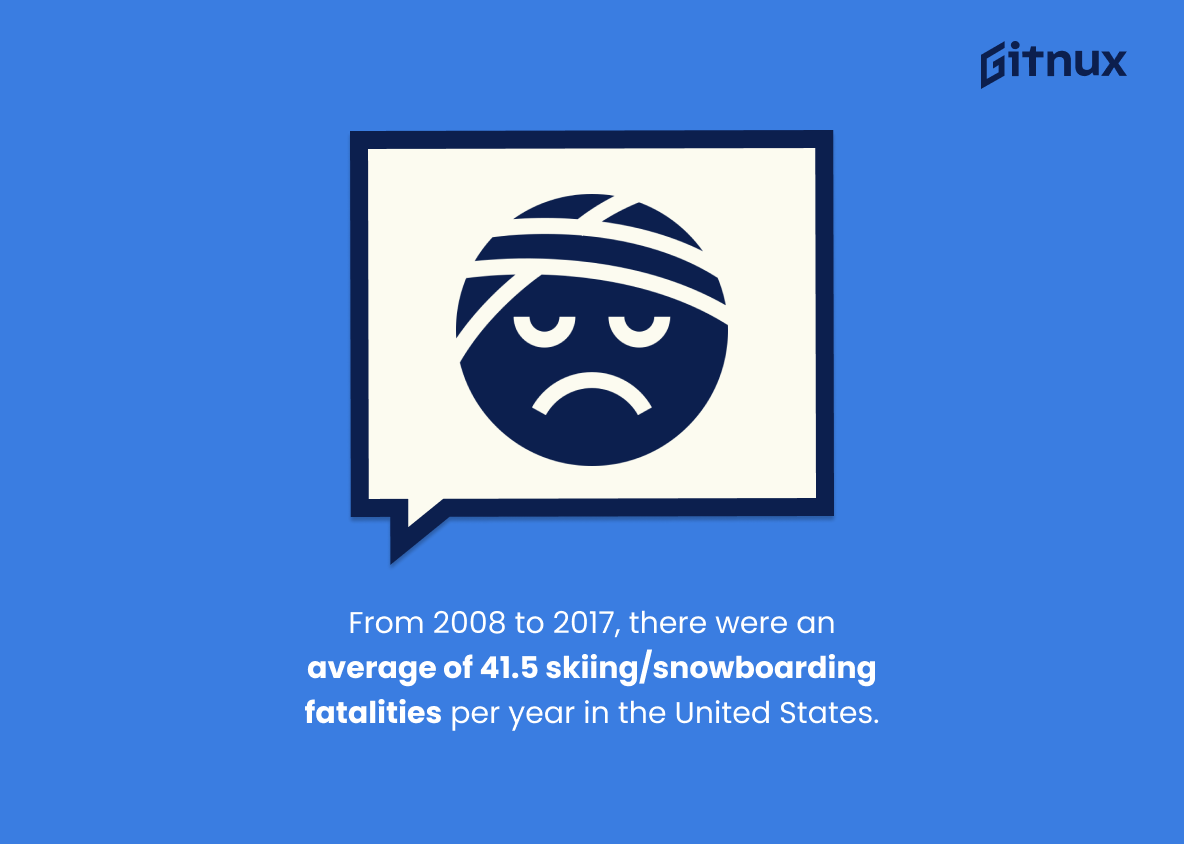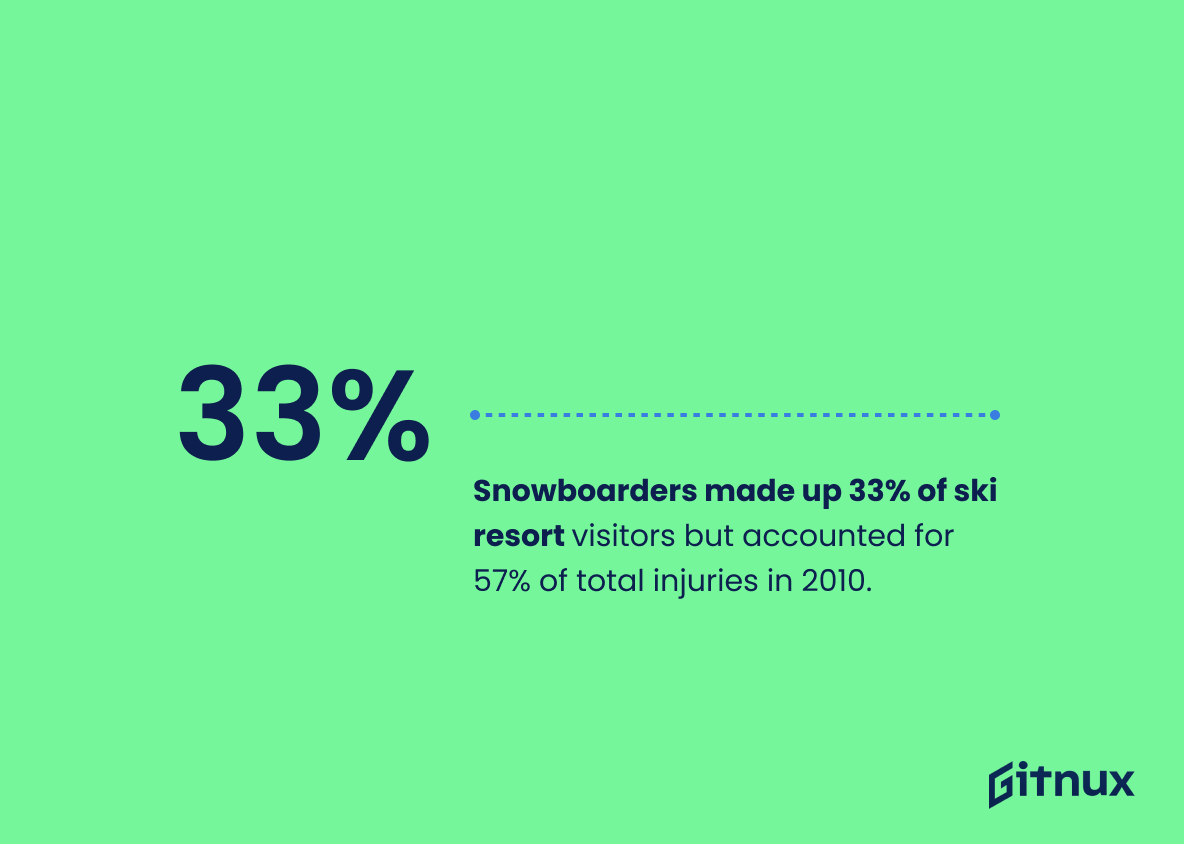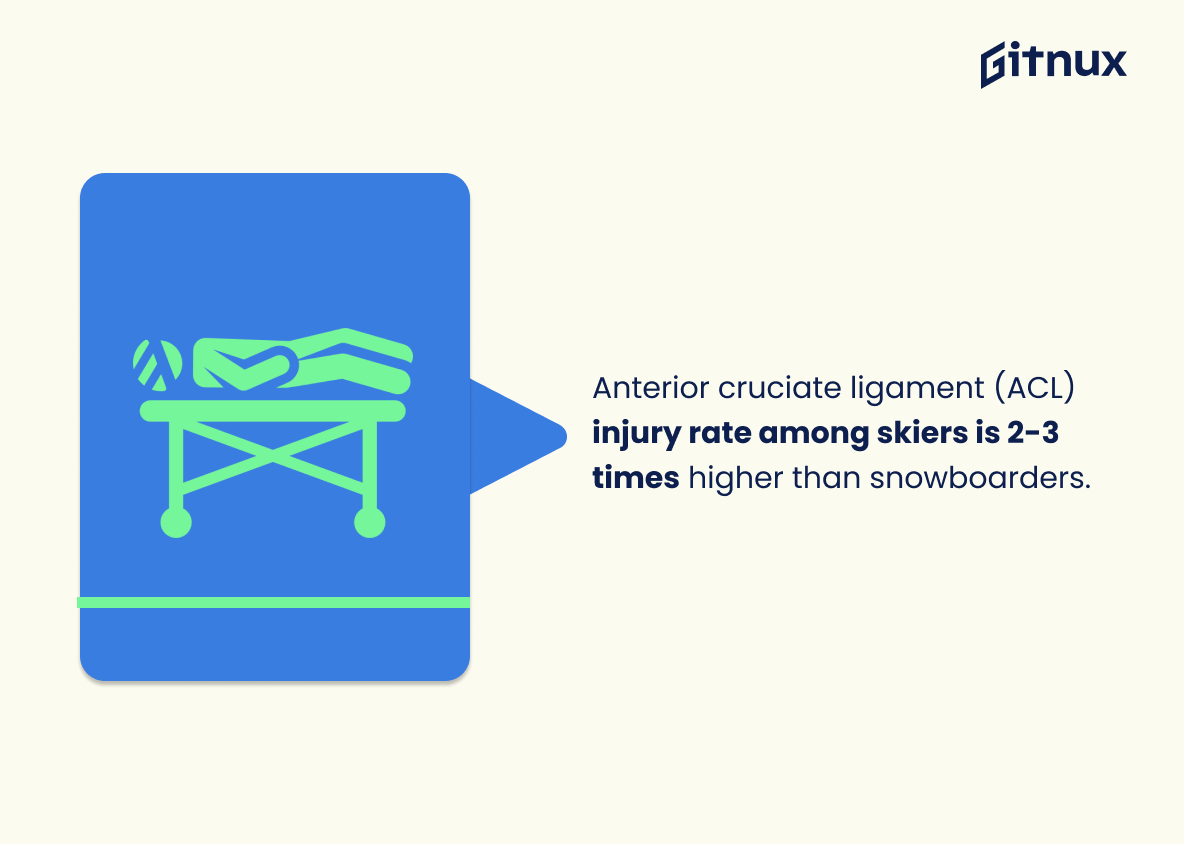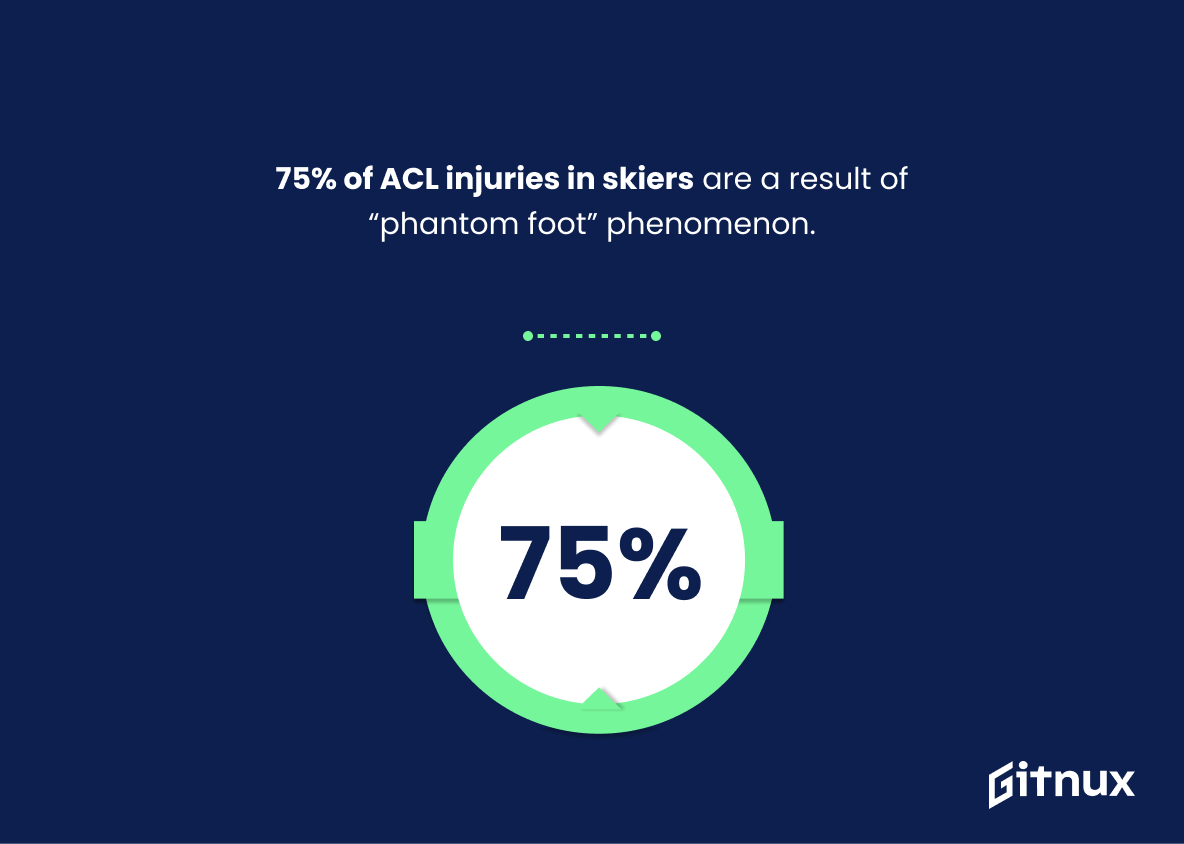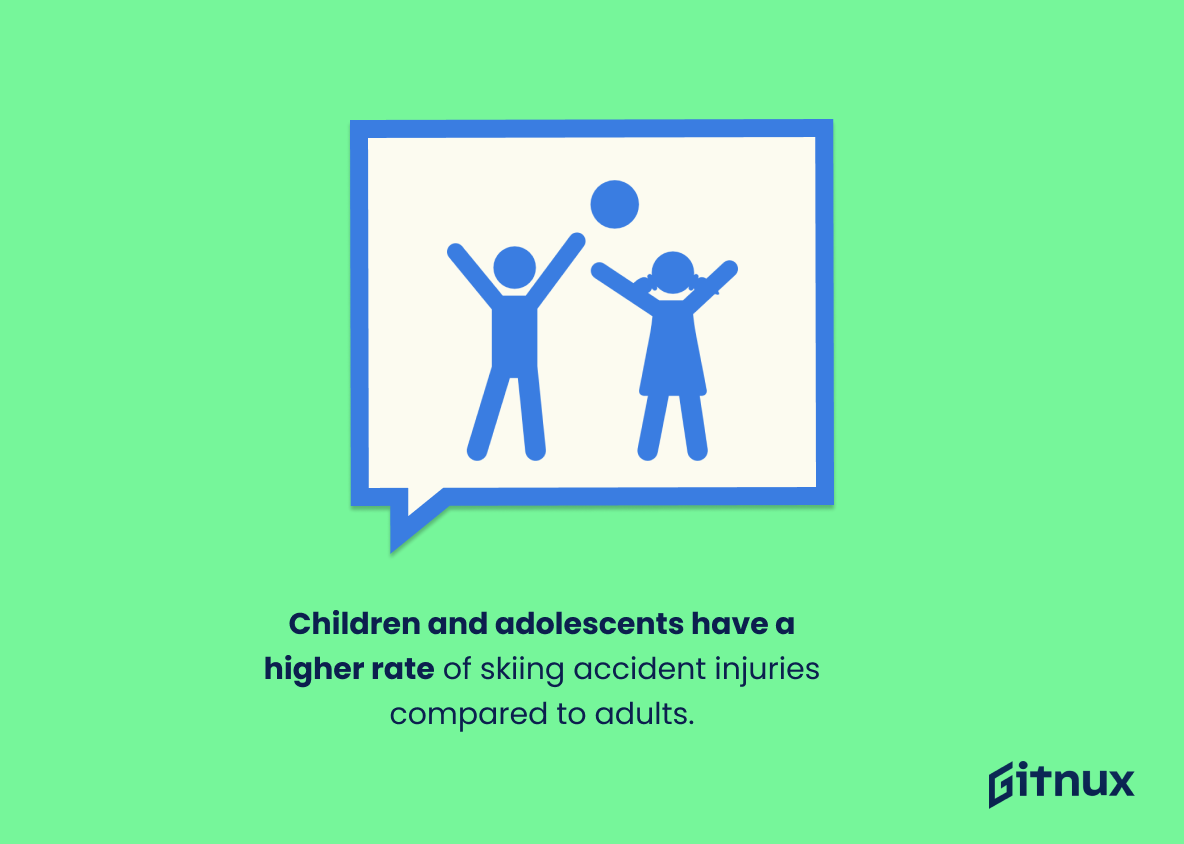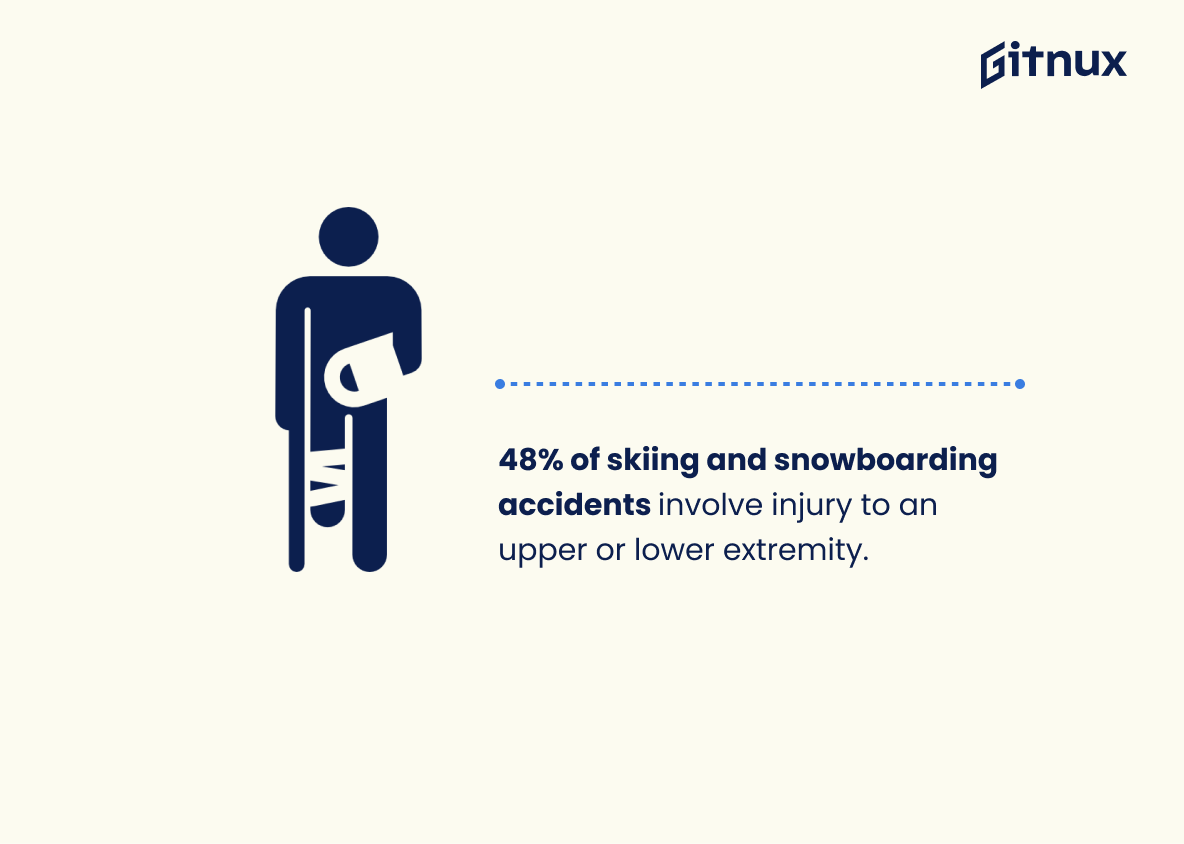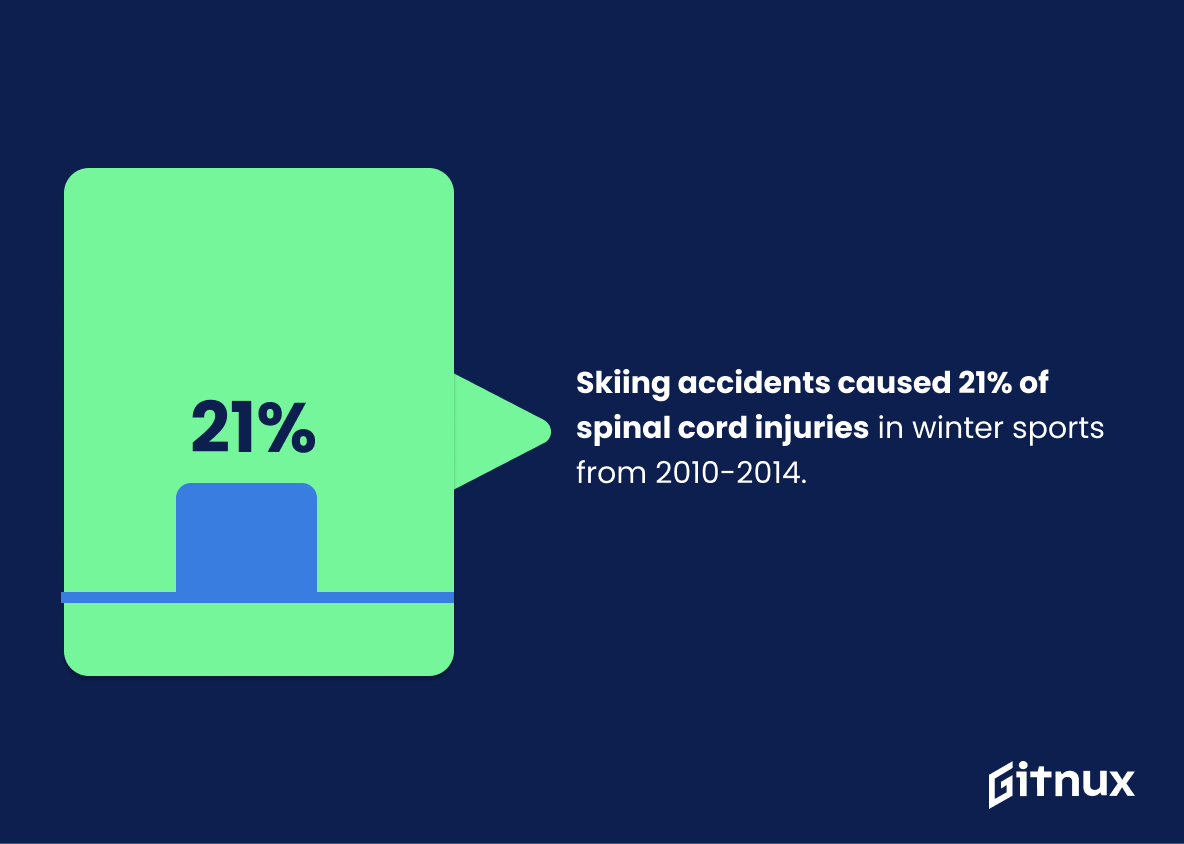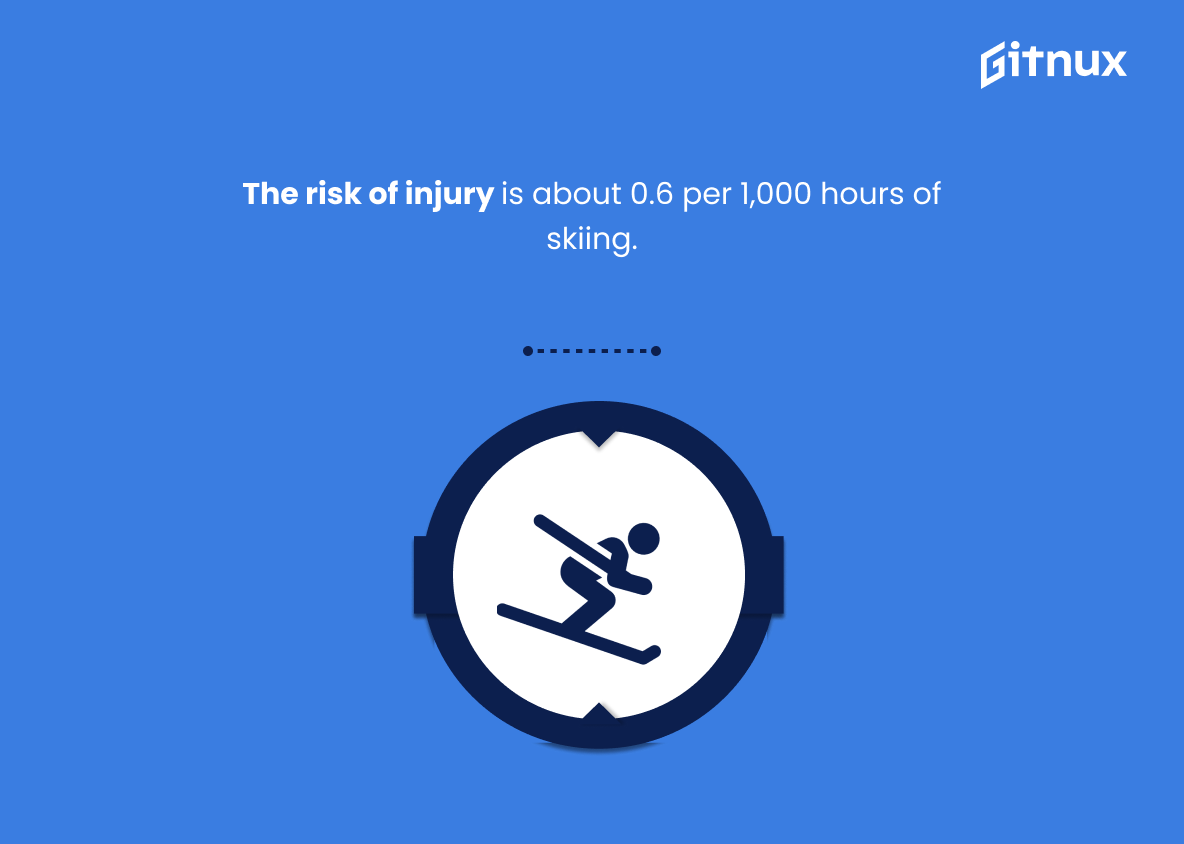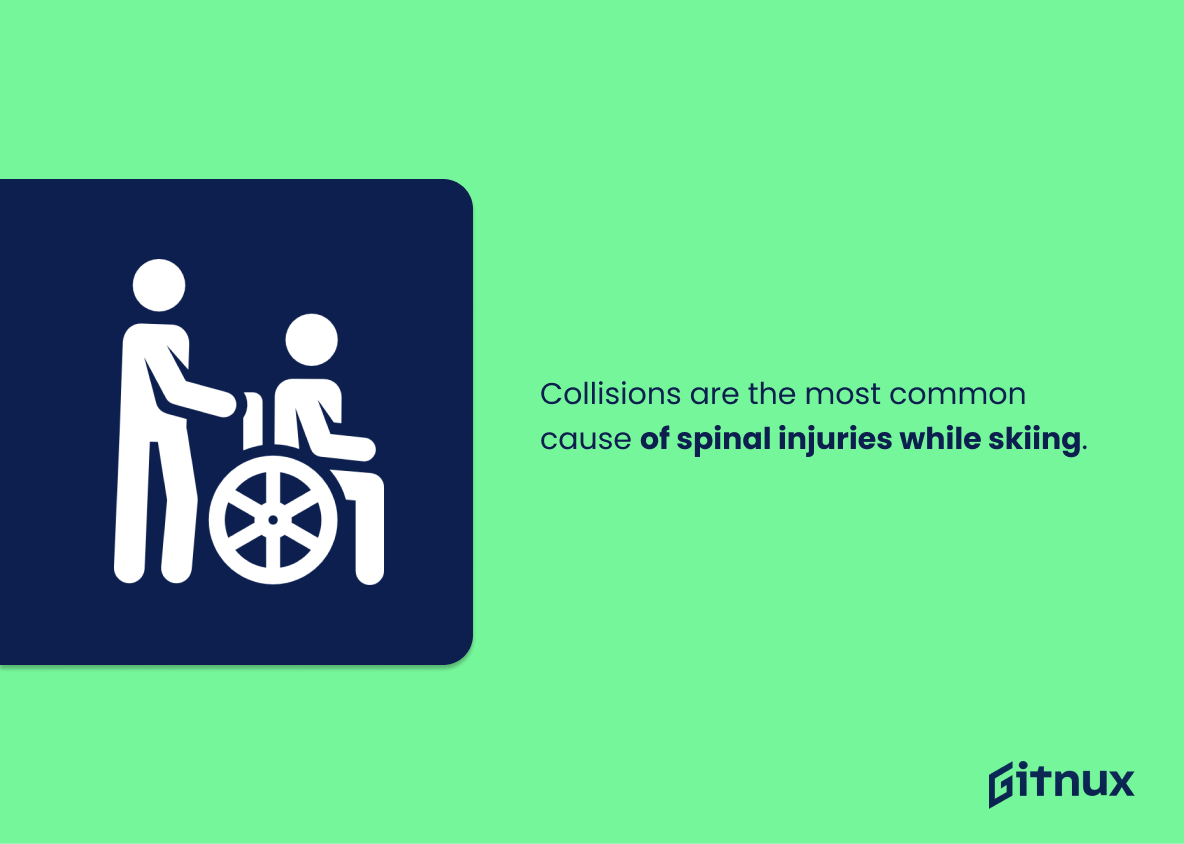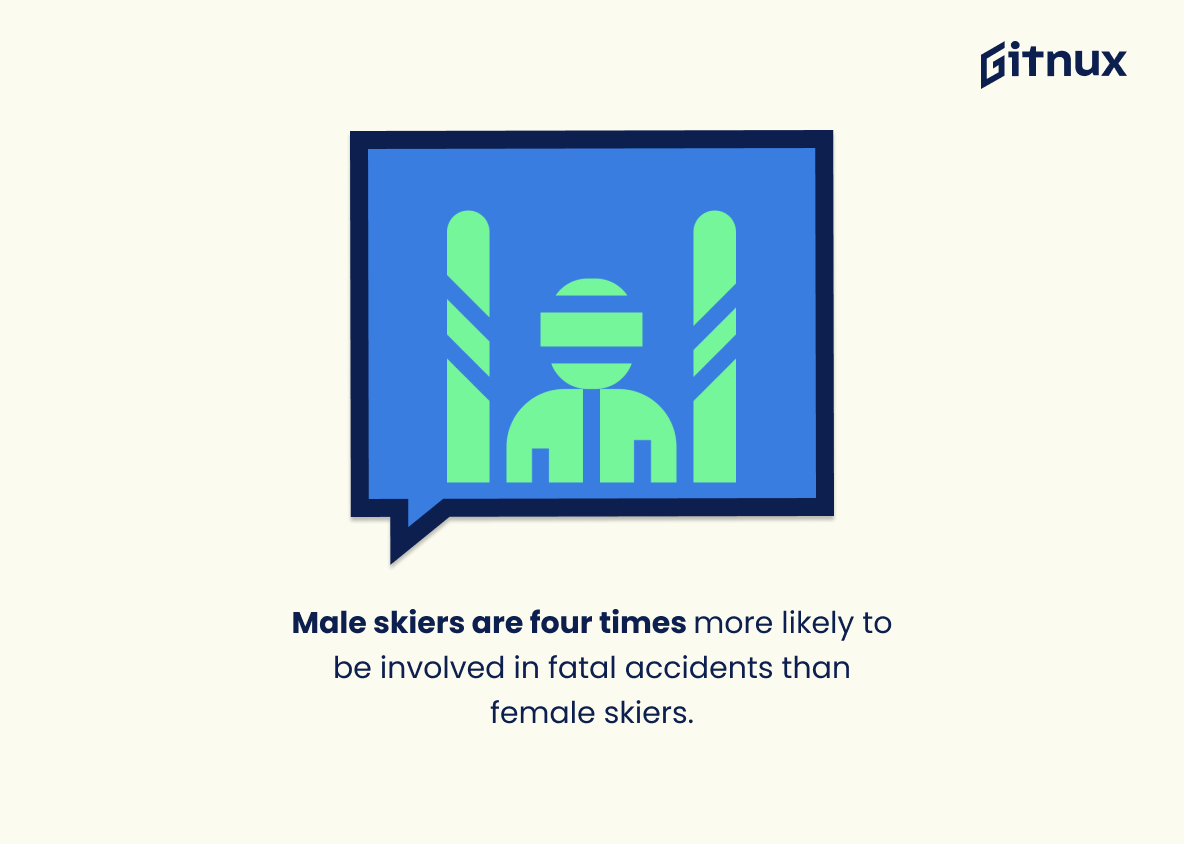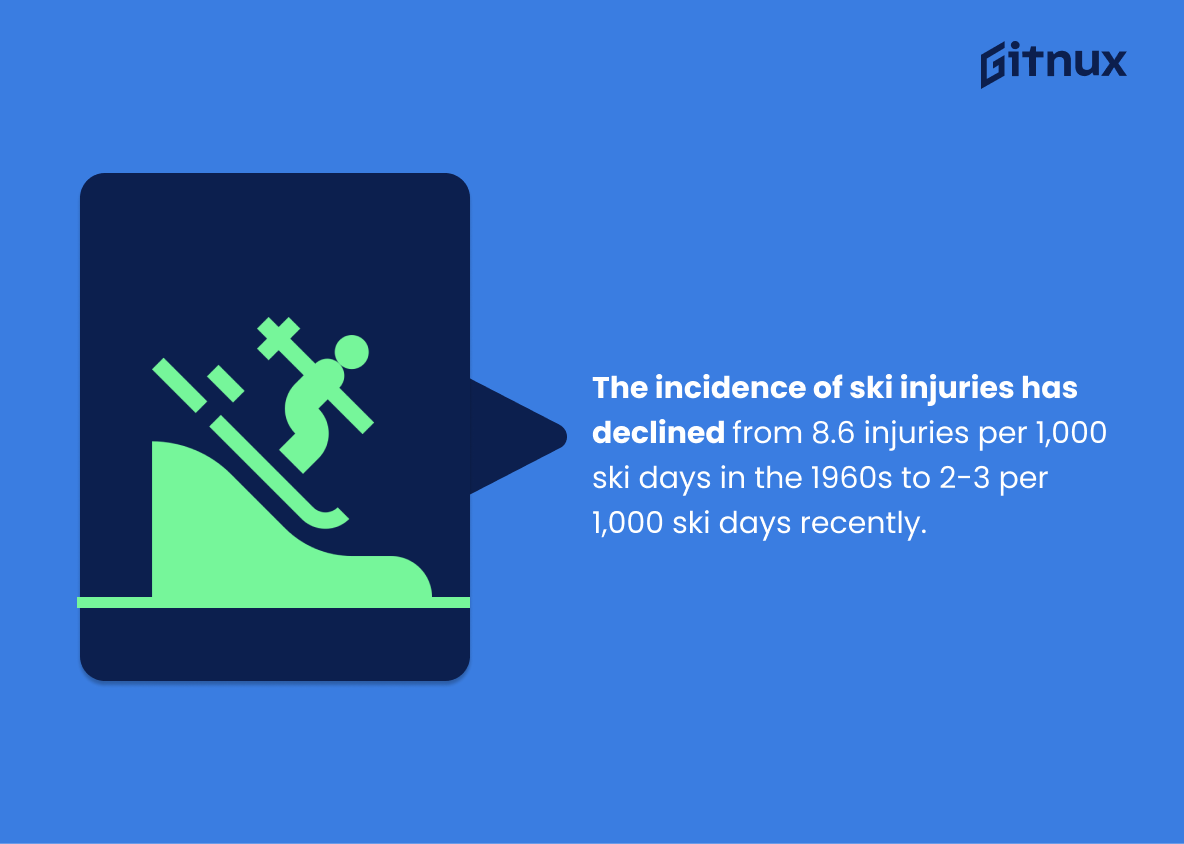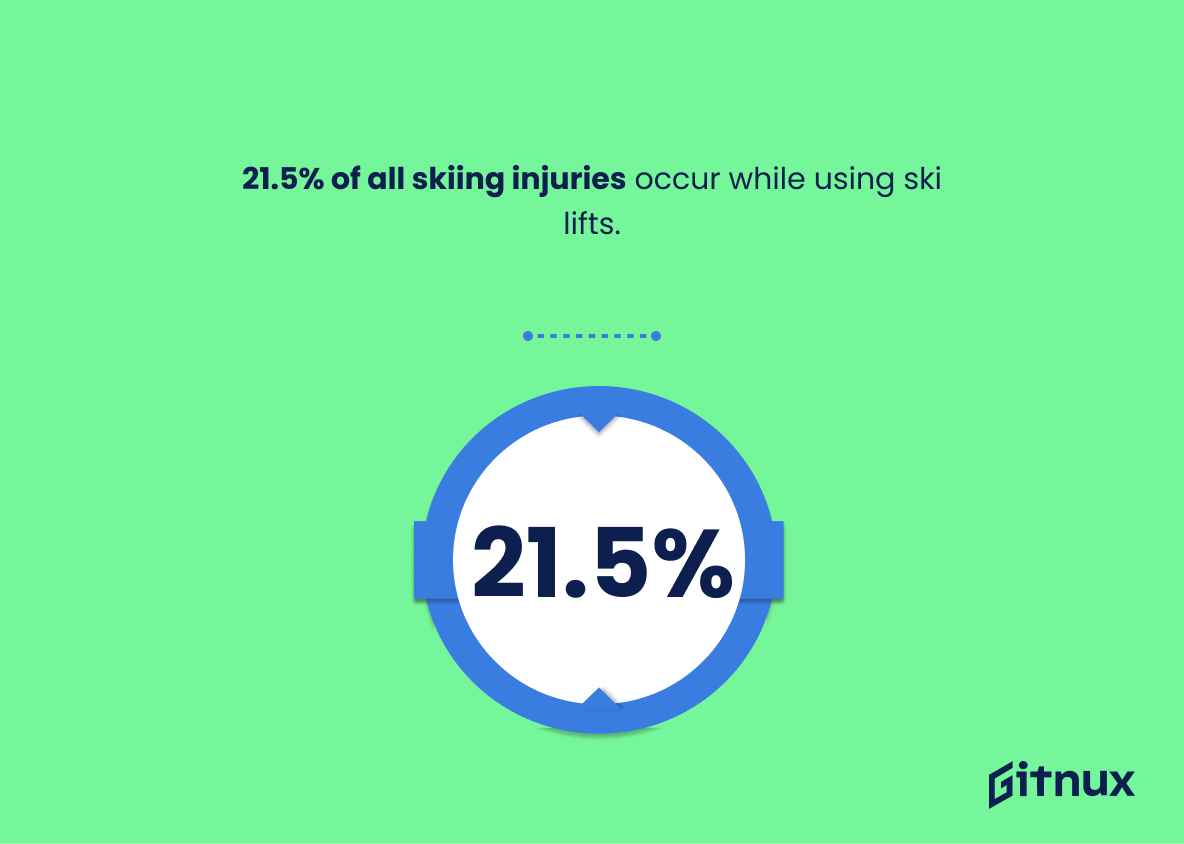Skiing is a popular winter sport enjoyed by millions of people around the world. Unfortunately, skiing can also be dangerous and lead to serious injuries or even fatalities. According to statistics from various sources, about 600,000 people are injured while skiing or snowboarding annually in the United States alone. During the 2019/2020 season there were 38 reported fatalities due to skiing accidents in America as well as an average of 41.5 deaths per year between 2008-2017 across all states combined. In Europe’s Alps resorts roughly 200 injuries occur for every 100,000 visits each year on average with 33% of visitors being snowboarders but accounting for 57% of total ski resort related injuries during 2010 according to one study conducted that same year.
Anterior cruciate ligament (ACL) injury rate among skiers is 2-3 times higher than those who prefer snowboarding and 75% ACL tears experienced by skiers have been attributed to “phantom foot” phenomenon which occurs when a person’s leg moves independently from their body causing them lose control over it leading up to an accident resulting in such injury type most commonly seen amongst this group of athletes . Helmet usage has proven effective at reducing head trauma risk by 35%, however children and adolescents still face greater risks compared adults when engaging in these activities with 48% involving upper or lower extremity damage occurring more frequently within this age range specifically.
All considered important take necessary precautions ensure safe enjoyable experience everyone participating winter sports like skiing regardless skill level ability
Skiing Accidents Statistics Overview
Roughly 200 skiing-related injuries per 100,000 visits occur each year in European Alps resorts.
This statistic serves as a stark reminder of the potential risks associated with skiing in European Alps resorts. It highlights the importance of taking necessary precautions to ensure a safe and enjoyable experience on the slopes. With 200 skiing-related injuries per 100,000 visits, it is essential to be aware of the potential dangers and take the necessary steps to reduce the risk of injury.
From 2008 to 2017, there were an average of 41.5 skiing/snowboarding fatalities per year in the United States.
This statistic serves as a stark reminder of the potential dangers of skiing and snowboarding. It highlights the importance of taking safety precautions while participating in these activities, as well as the need for increased awareness of the risks associated with them.
Snowboarders made up 33% of ski resort visitors but accounted for 57% of total injuries in 2010.
This statistic is a stark reminder of the dangers of snowboarding, highlighting the fact that although snowboarders make up a smaller portion of ski resort visitors, they are disproportionately more likely to suffer injuries. It serves as a warning to all skiers and snowboarders to take extra caution when on the slopes.
Anterior cruciate ligament (ACL) injury rate among skiers is 2-3 times higher than snowboarders.
This statistic is a stark reminder of the increased risk of ACL injury that skiers face compared to snowboarders. It serves as a warning to skiers to take extra precautions when on the slopes, and to be aware of the potential for serious injury. It also highlights the importance of proper instruction and safety gear for skiers, as well as the need for ski resorts to provide adequate safety measures.
75% of ACL injuries in skiers are a result of “phantom foot” phenomenon.
This statistic is a crucial piece of information when it comes to skiing accidents, as it highlights the importance of being aware of the “phantom foot” phenomenon. Knowing that the majority of ACL injuries in skiers are caused by this phenomenon can help skiers take the necessary precautions to avoid such injuries. Furthermore, this statistic can be used to inform skiers of the risks associated with skiing and the importance of taking the necessary safety measures.
Helmet usage has reduced the risk of head injuries by 35% among skiers and snowboarders.
This statistic is a powerful reminder of the importance of wearing a helmet while skiing and snowboarding. It demonstrates that helmets can drastically reduce the risk of head injuries, making them an essential piece of safety equipment for anyone hitting the slopes. This statistic is a crucial part of any discussion about skiing accidents and the importance of taking safety precautions.
Children and adolescents have a higher rate of skiing accident injuries compared to adults.
This statistic is a stark reminder that children and adolescents are particularly vulnerable to skiing accident injuries, and that extra caution should be taken when they are on the slopes. It is essential that parents and guardians are aware of the risks associated with skiing and take the necessary steps to ensure their children’s safety.
48% of skiing and snowboarding accidents involve injury to an upper or lower extremity.
This statistic is a stark reminder of the potential risks associated with skiing and snowboarding. It highlights the importance of taking the necessary precautions to protect oneself from injury, such as wearing protective gear and following safety guidelines. Knowing that nearly half of all skiing and snowboarding accidents involve injury to an upper or lower extremity is a powerful reminder of the need to stay safe on the slopes.
Skiing accidents caused 21% of spinal cord injuries in winter sports from 2010-2014.
This statistic is a stark reminder of the potential dangers of skiing, highlighting that it is responsible for a significant proportion of spinal cord injuries in winter sports. It serves as a warning to skiers to take extra caution when on the slopes, and to be aware of the risks associated with the sport.
The risk of injury is about 0.6 per 1,000 hours of skiing.
This statistic is a crucial piece of information when it comes to understanding the risks associated with skiing. It provides a clear indication of the likelihood of an injury occurring during a given amount of time spent skiing, allowing skiers to make informed decisions about their safety. By understanding the risk of injury, skiers can take the necessary precautions to reduce their chances of being injured while skiing.
Collisions are the most common cause of spinal injuries while skiing.
This statistic is a stark reminder of the potential risks associated with skiing, highlighting the importance of taking necessary safety precautions while on the slopes. It serves as a warning to skiers that they should be aware of the dangers of collisions and take steps to protect themselves from spinal injuries.
Male skiers are four times more likely to be involved in fatal accidents than female skiers.
This statistic is a stark reminder of the dangers of skiing, particularly for male skiers. It highlights the need for extra caution and safety measures to be taken when skiing, as well as the importance of educating male skiers on the risks associated with the sport. It also serves as a reminder that skiing can be a dangerous activity, and that proper safety precautions should be taken by all skiers regardless of gender.
Head injuries are responsible for 70% of skiing-related fatalities.
This statistic is a stark reminder of the dangers of skiing and the importance of taking safety precautions while on the slopes. It highlights the need for skiers to wear helmets and other protective gear to reduce the risk of serious head injuries. Knowing that head injuries are the leading cause of skiing-related fatalities should encourage skiers to take extra care when skiing and to be aware of the potential risks.
The incidence of ski injuries has declined from 8.6 injuries per 1,000 ski days in the 1960s to 2-3 per 1,000 ski days recently.
This statistic is a testament to the progress that has been made in ski safety over the years. It shows that the efforts to reduce ski injuries have been successful, and that skiing is now a much safer activity than it was in the past. This is an encouraging sign for anyone considering taking up skiing, and it should be highlighted in any blog post about skiing accidents statistics.
21.5% of all skiing injuries occur while using ski lifts.
This statistic is a crucial piece of information when it comes to skiing accidents, as it highlights the importance of taking extra precautions when using ski lifts. Knowing that a significant portion of skiing injuries occur while using ski lifts can help skiers be more aware of the potential risks and take the necessary steps to stay safe.
The risk of traumatic brain injury among skiers with helmets is 48% lower in comparison to those without helmets.
This statistic is a powerful reminder of the importance of wearing a helmet while skiing. It clearly demonstrates that helmets can drastically reduce the risk of traumatic brain injury, making them an essential piece of safety equipment for any skier.
Ski patrol incidents in Australia found that there were 22.96 incidents per 10,000 skier visits during 2004-2007.
This statistic is a crucial indicator of the safety of skiing in Australia, providing a snapshot of the number of incidents that occurred during a four-year period. It is an important piece of information for anyone considering skiing in Australia, as it gives them an idea of the risks associated with the activity. Furthermore, it can be used to compare the safety of skiing in Australia to other countries, helping to inform decisions about where to ski.
Conclusion
Skiing and snowboarding are popular winter sports, but they come with a risk of injury. According to statistics from the United States, Europe, Australia and other countries around the world, an estimated 600,000 people are injured while skiing or snowboarding annually. In 2019/2020 season in the US alone there were 38 fatalities due to skiing accidents. European Alps resorts reported roughly 200 injuries per 100 000 visits each year on average.
From 2008-2017 in the US 41.5 fatalities occurred every year as a result of these activities; 33% of ski resort visitors were snowboarders who accounted for 57% of total injuries during 2010 period; Anterior cruciate ligament (ACL) injury rate among skiers is 2-3 times higher than that among boarders; 75% ACL injuries occur because of “phantom foot” phenomenon; Helmet usage has reduced head injury risks by 35%; Children and adolescents have higher rates compared to adults – 48% involve upper or lower extremity damage while 21 % spinal cord related incidents happen when skiing; The risk is 0.6 per 1 000 hours spent on slopes whereas speed skiers face 300 times more danger than moderate recreational ones – male participants 4x more likely involved in fatal cases where 70 % caused by head trauma.
References
0. – https://www.www.ncbi.nlm.nih.gov
1. – https://www.avalanche.state.co.us
2. – https://www.pubmed.ncbi.nlm.nih.gov
3. – https://www.www.rospa.com
4. – https://www.www.outsideonline.com
5. – https://www.www.researchgate.net
6. – https://www.www.nsaa.org
7. – https://www.bjsm.bmj.com

